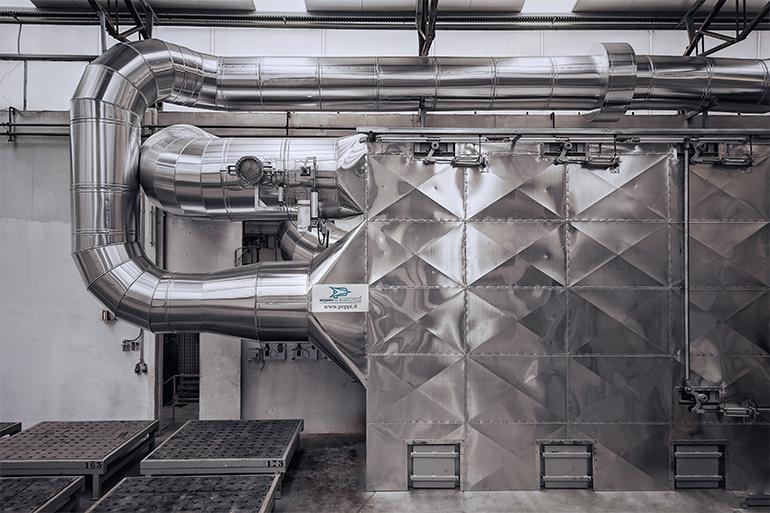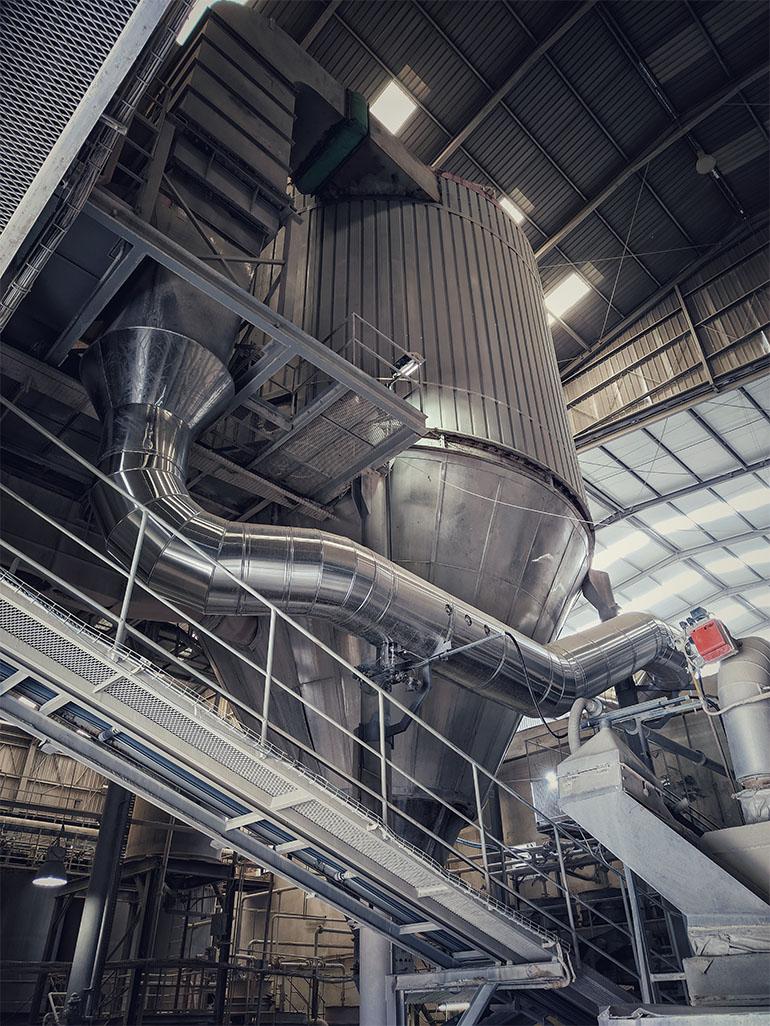Energy recovery: a step forward in heat management technology
The self-cleaning plate heat exchangers from the P-Rex© Series by Poppi Clementino stand out for the innovative design of the exchange surfaces and the meticulous choice of materials, allowing for energy recovery even at very low exhaust temperatures.
In today’s increasingly unpredictable energy market, optimising energy resources at manufacturing sites has become essential. For ceramic manufacturers, kiln exhaust gases present a valuable opportunity for energy recovery despite the presence of contaminants. Recognising this, numerous ceramic companies around the world are opting for advanced solutions from Poppi Clementino S.p.A., most notably the latest generation of P-Rex© Series heat exchangers.
Advanced design technology
The self-cleaning plate heat exchangers from the P-Rex© Series represent a significant step up from previous models, which were already highly regarded in the industry and have been adopted by some of the largest international ceramic groups. This new series stands out for the innovative design of the exchange surfaces and the meticulous choice of materials, two factors that bring a significant improvement in terms of heat management and allow for energy recovery even at very low exhaust temperatures.
The use of state-of-the-art fluid-dynamic analysis software allowed the exchanger’s internal pathways to be optimised and critical areas to be identified, thereby improving the design and maximising thermal efficiency. The result is a new configuration that achieves unprecedented levels of performance in the ceramic sector.
CO₂ reduction and sustainability
Effective heat recovery from exhaust gases not only brings substantial energy savings but also reduces CO₂ emissions and eases the load on filtration systems. With less residue to manage and lower energy demands for exhaust gas treatment, the P-Rex© Series provides a sustainable and environmentally friendly solution.
Energy savings and flexible integration
P-Rex© heat exchangers are essential for energy recovery and optimisation of the thermal potential of residual exhaust gases from ceramic kilns. Thanks to their flexibility, they can be installed in new plants as well as easily integrated into existing ones. Furthermore, to enhance its performance, the P-Rex© can be combined with advanced energy recovery technologies, such as cogeneration plants and solutions for pre-heating slip fed into spray dryers (EnerGX© technology).
Reducing the workload on filtration systems
One of the biggest advantages of the P-Rex© Series is its ability to lower exhaust gas temperatures to 150°C, thereby significantly reducing their volume before they reach the filtration systems. This eases the workload on filters, extending their lifespan and lowering maintenance requirements. Additionally, the reduced volume of exhaust gases allows for smaller, less costly filtration systems, resulting in savings in both operating and maintenance costs.
By reducing the need for filtration, the P-Rex© Series offers an efficient and sustainable solution that not only maximises energy recovery, but also reduces overall plant operating costs. This means that manufacturers benefit from a more economical, low-maintenance plant that also supports environmental sustainability goals by further reducing overall emissions.
Did you find this article useful?
Join the CWW community to receive the most important news from the global ceramic industry every two weeks






















